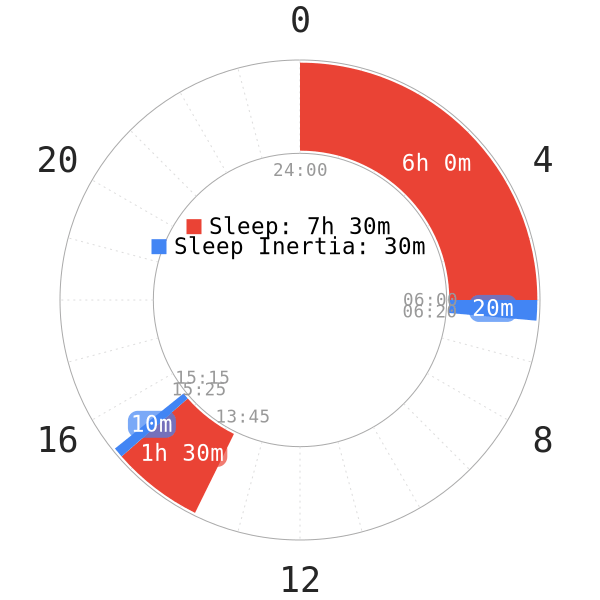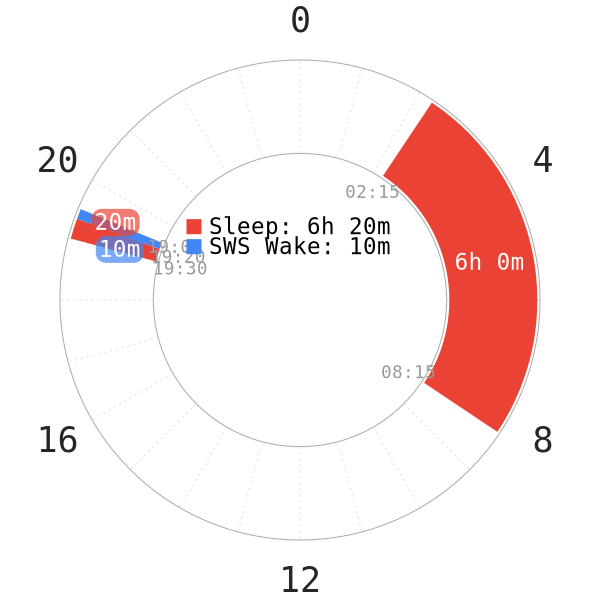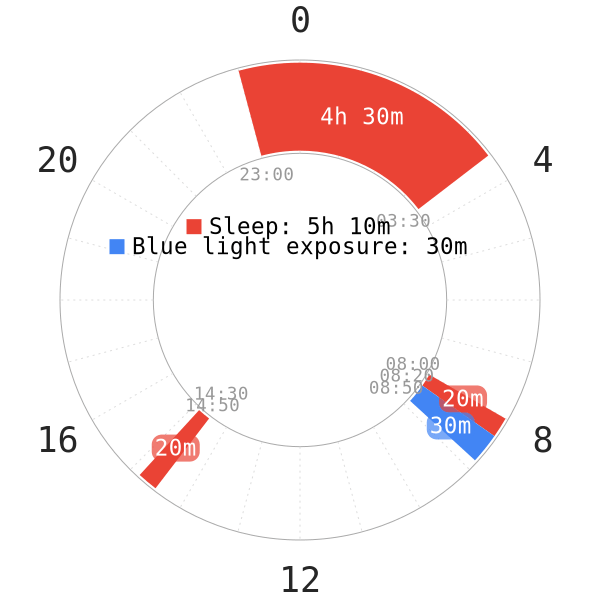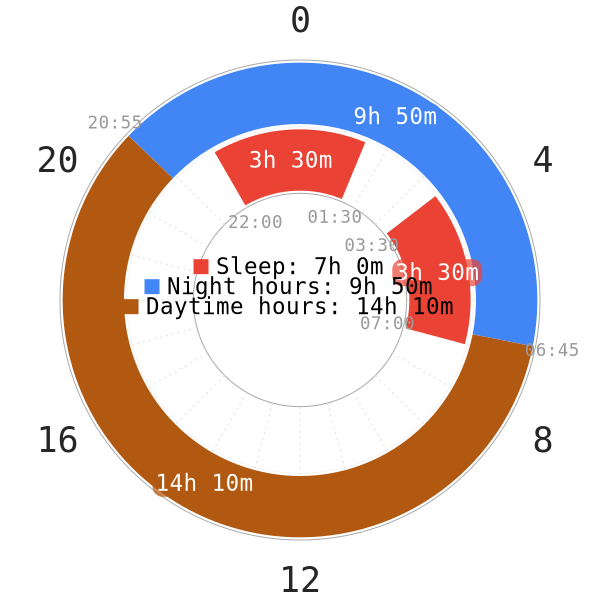DISCLAIMER
Several findings here may be contradictory from the past to the present day. More mechanics regarding sleep inertia are still in the dark. Additionally, whether polyphasic sleep can completely handle it over a sufficiently long period of entrainment to the sleep pattern is also unclear. Therefore, more studies and baseline readings are necessary for extra comparison.
Introduction

Sleep inertia is a very common sleep phenomenon in humans. It is a period of impaired alertness upon awakening from sleep, including both core sleeps and naps1. Whether the sleep pattern is monophasic or polyphasic, inertia can occur in a seemingly random pattern; its degree of severity and effects also vary depending on different contributing factors.
There are also concerns about how inertia affects performance on different tasks (physical or cognitive). Furthermore, there are a lot of questions to answer about its mechanics. Any reliably absolute solutions that can effectively shut it down has also been in discussion.
- Is sleep inertia an entirely negative aspect of sleep?
- Is it dangerous? If so, how much?
- Do homeostatic and circadian pressures have anything to do with it?
- Is it wrong to live with mild levels of inertia on a daily basis?
This blog post will serve to break down all relevant factors that can improve or worsen sleep inertia. Most importantly, whether it is entirely possible to avoid sleep inertia.
Contributing Factors
Prior Sleep duration
This is a factor because of its relevance to homeostatic pressure. A common prediction would be that the higher the sleep pressure, the deeper a sleep session becomes and the more likely to experience inertia. This is a partial effect of catching up on sleep. However, a polyphasic experiment showed that it was not simple to make such conclusions. Such conditions involve at least in terms of non-reducing polyphasic schedules2.
There was an older study that experimented with the Tesla schedule.
- The effect of sleep inertia was heavily amplified after some time had passed on the schedule.
- No participants overslept, which suggests that the level of sleepiness likely caused sleep inertia to linger for a much longer period of time than expected3. However, this does not reflect the full-blown adaptation process to polyphasic schedules unless the subjects stayed on the schedule long enough (at least 1 month).
- Tesla is also an extremely difficult schedule, if not outright unsustainable short-term. Meanwhile, more realistic-looking polyphasic schedules with higher total sleep could likely yield very different results.
Prior sleep duration seems to be a reasonable factor that contributes to sleep inertia to a certain extent; however, it is conclusively not a stand-alone factor with unknown mechanics.
Sleep Stages
This is one of the most potent factors.
- On consensus, waking up in SWS gives the most sleep inertia.
- REM wakes have varying degrees of sleep inertia.
- REM sleep’s eye-movement density can determine if there would be a lot or merely a moderate amount of sleep inertia at awakening.
- High rapid eye-movement density causes a lot more sleep inertia than low density.
- NREM1 and NREM2 wakes usually do not cause noticeable problem-processing or solving skills moments after awakening1,2.
Sleep Deprivation
From the experiment with Tesla schedule, it is clear that intense sleep deprivation occurred after a short time on the schedule. Until adaptation is done, the body will not program automatic wake time to place light sleep at the end of each sleep. Since participants never completed the adaptation to Tesla, sleepers constantly struggled with SWS/REM wakes.
However, in one experiment, Claudio Stampi noted that performance upon awakening on a 3-hour polyphasic schedule did not show serious signs of impairment after at least a couple days.
- Sleep inertia was present, but affected different types of tasks1.
- Sleep inertia severely hindered tasks such as Descending Subtraction. This is a task that requires counting down from 100 to psychologically check for cognitive functions.
- Tasks that required high levels of cognitive performance did not show as much change2.
When sleep deprivation level is moderate (partial sleep deprivation), in short naps (< 60 minutes), sleep stages play a dominant role in determining sleep inertia rather than sleep deprivation itself2. This is a reasonable conclusion; when exposed to polyphasic sleep for the first time, sleepers should avoid having odd sleep lengths. Examples include 50 minute naps and 2h core sleeps. The purpose is to avoid SWS/REM wakes from the beginning.
Sleep Timing in the Day

Daytime naps generated less sleep inertia than later naps, which have a higher percentage of NREM sleep.
- Circadian-wise, later sleep sessions in the day approach the SWS peak; hence, it is easier to incur SWS wakes and heavier sleep inertia.
- This explains why ideal Biphasic schedules do not favor late naps in the day (6 PM onward). This is not only because of potentially higher amount of inertia from the naps but also the potentially delayed night sleep.
- Late naps on other polyphasic schedules are also discouraged. However, pure nap-only schedules do not follow this rule and their mechanics are a lot different.
Abnormal sleep-wake schedules, including those that do not follow any specific rhythms, likely cause more sleep inertia. This is especially if awakening occurs near circadian low (2-4 AM)2. However, this conclusion was based on the in-progress adaptation to polyphasic schedules, which goes with sleep inertia and bad wakes.
The cognitive and physical states after a complete adaptation should give a very limited amount of sleep inertia, or none in some cases. The vast majority of the polyphasic sleeping experiments were not long enough to conclude that polyphasic sleeping would always cause more sleep inertia upon awakening than monophasic sleep. Furthermore, the majority of experiments focused on extreme nap-only schedules or very tough schedules with low success rate.
Is inertia dangerous?
Claudio Stampi remarked that sleep inertia can be bothersome at least and potentially dangerous at most at the wrong time1.
- During sustained operations where workers can only afford short naps around the clock, sleep inertia can affect the accuracy of the performance. Workers would then make more mistakes.
- Tasks that demand alertness right upon awakening also pose a big issue.
Thus, it comes down to personal occupations. This would help determine if a polyphasic schedule with several naps or convoluted mechanics should be attempted. It is important to avoid suffering from unnecessary, long-lasting sleep inertia.
Is it possible to avoid inertia?
A very recent finding suggests that one can alleviate sleep inertia. There is also a niche means to drastically reduce its effects. Artificial dawn signals can be used to help minimize sleep inertia4.
Artificial blue light

- This includes the use of blue lights as a timer to stop melatonin secretion and start a new day.
- The use of artificial dawn also decreased skin temperature, which is a biological process. During morning hours, core body temperature increases as the body wakes up; artificial dawn promotes vasoconstriction of blood vessels to reduce the effect of arousals upon awakening.
- Another study suggested that the peak of alertness is not right after awakening. Sleep inertia is always present and can last for minutes to hours. This implies that a small or negligible amount of sleep inertia does not pose any harm6.
Natural blue light

- In this example, a Segmented sleeper relies on sunrise hours as a natural blue light source.
- The purpose is to wake up from the second core after dawn has started outside. However, to protect the integrity of the dark period, time it so that dawn breaks only some time before you wake up.
The forbidden zone of sleep
An alternative to scheduling under normal conditions and biphasic sleeping is to make use of the Forbidden zone of sleep. This zone includes a couple hours before night sleep (typically 19:00-21:00), assuming normal nocturnal sleep hours.
- By placing a nap right before the Forbidden Zone, but not inside the zone, it becomes possible to both get some sleep and wake up more easily with reduced sleep inertia effects.
- This is owing to the body’s high alertness in preparation for the habitual night sleep.
- In addition, core body temperature is at the highest point in mid/late afternoon (4-6 PM).
However, how one should use the forbidden zone to reduce inertia and if it is a reliable tool seems very inconsistent.
Conclusion
Nowadays, blue light, changes in sleep hours, a general lack of sleep hygiene practice and knowledge on sleep maintenance are prevalent. Thus, it is understandable that a lot of people are sleep deprived and wake up feeling unrested. Sleep inertia is very common and for the most part seems to be the norm of the current era.
However, minor duration of less than 15 minutes is normal and negligible1. However, intensified sleep inertia is present under more extreme sleep deprivation conditions and possibly the improper usage of sleep duration (e.g, mid-cycle naps like 50 minutes). The ideal natural wake to aim for should be the light sleep stages to feel completely refreshed.
While it is usually not possible to completely avoid, one can make more efforts to improve sleep quality to form consistent sleep routines. More research and data on the post-adaptation phase of polyphasic sleep would be necessary to conclude if this grogginess is persistent or can be minimized with sufficient sleep hours and sleep hygiene.
Main author: GeneralNguyen
Page last updated: 2 April 2021
Reference
- Stampi, Claudio. Why We Nap : Evolution, Chronobiology, and Functions of Polyphasic and Ultrashort Sleep. Birkhauser, 2014.
- Tassi, Patricia, and Alain Muzet. “Sleep Inertia.” Sleep Medicine Reviews. 2000;4(4):341–353. doi:10.1053/smrv.2000.0098. [PubMed]
- Naitoh, P., et al. “Sleep Inertia: Best Time Not to Wake Up?” Chronobiology International. 1993;10(2):109–118. doi:10.1080/07420529309059699.[PubMed]
- VAN DE WERKEN, MAAN, et al. “Effects of Artificial Dawn on Sleep Inertia, Skin Temperature, and the Awakening Cortisol Response.” Journal of Sleep Research.2010;19(3):425–435.doi:10.1111/j.1365-2869.2010.00828.x. [PubMed]
- Lavie, P., and B. Weler. “Timing of Naps: Effects on Post-Nap Sleepiness Levels.” Electroencephalography and Clinical Neurophysiology. 1989;72(3):218–224. doi:10.1016/0013-4694(89)90246-0. [PubMed]
- Krauchi, K., Cajochen, C., & Wirz-Justice, A. Waking up properly: is there a role of thermoregulation in sleep inertia? Journal of Sleep Research. 2004;13(2):121–127. doi:10.1111/j.1365-2869.2004.00398.x [PubMed]
